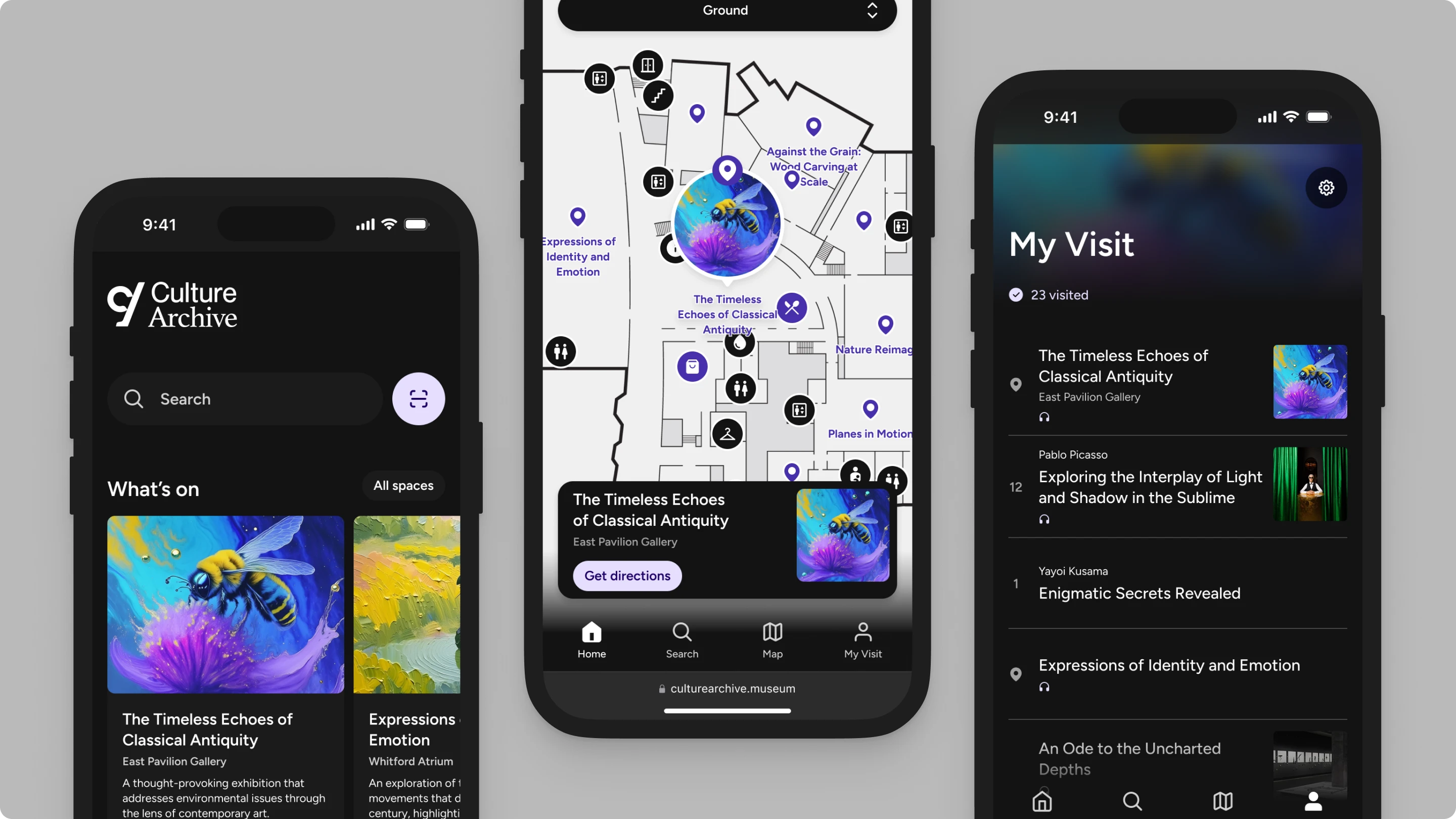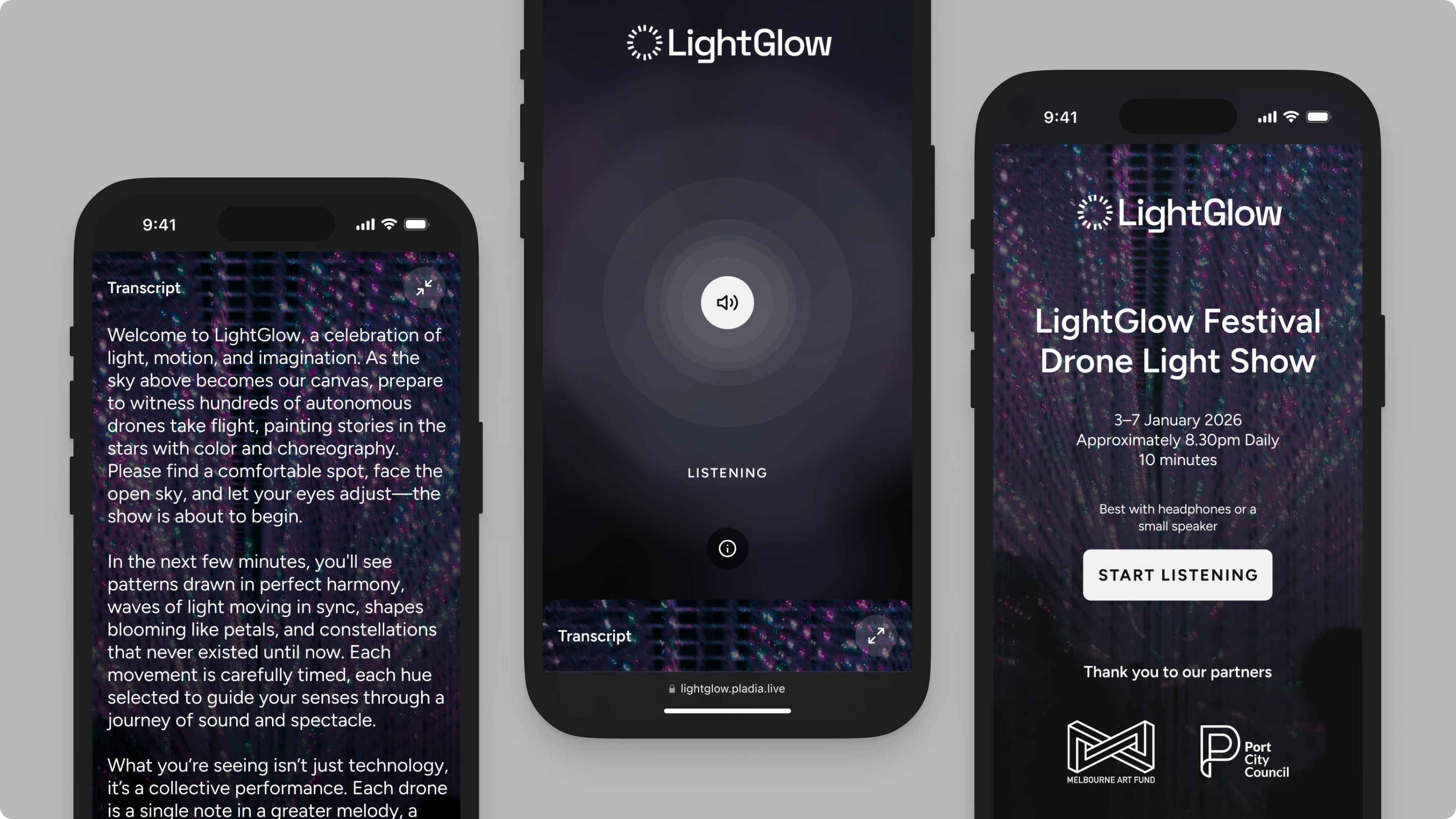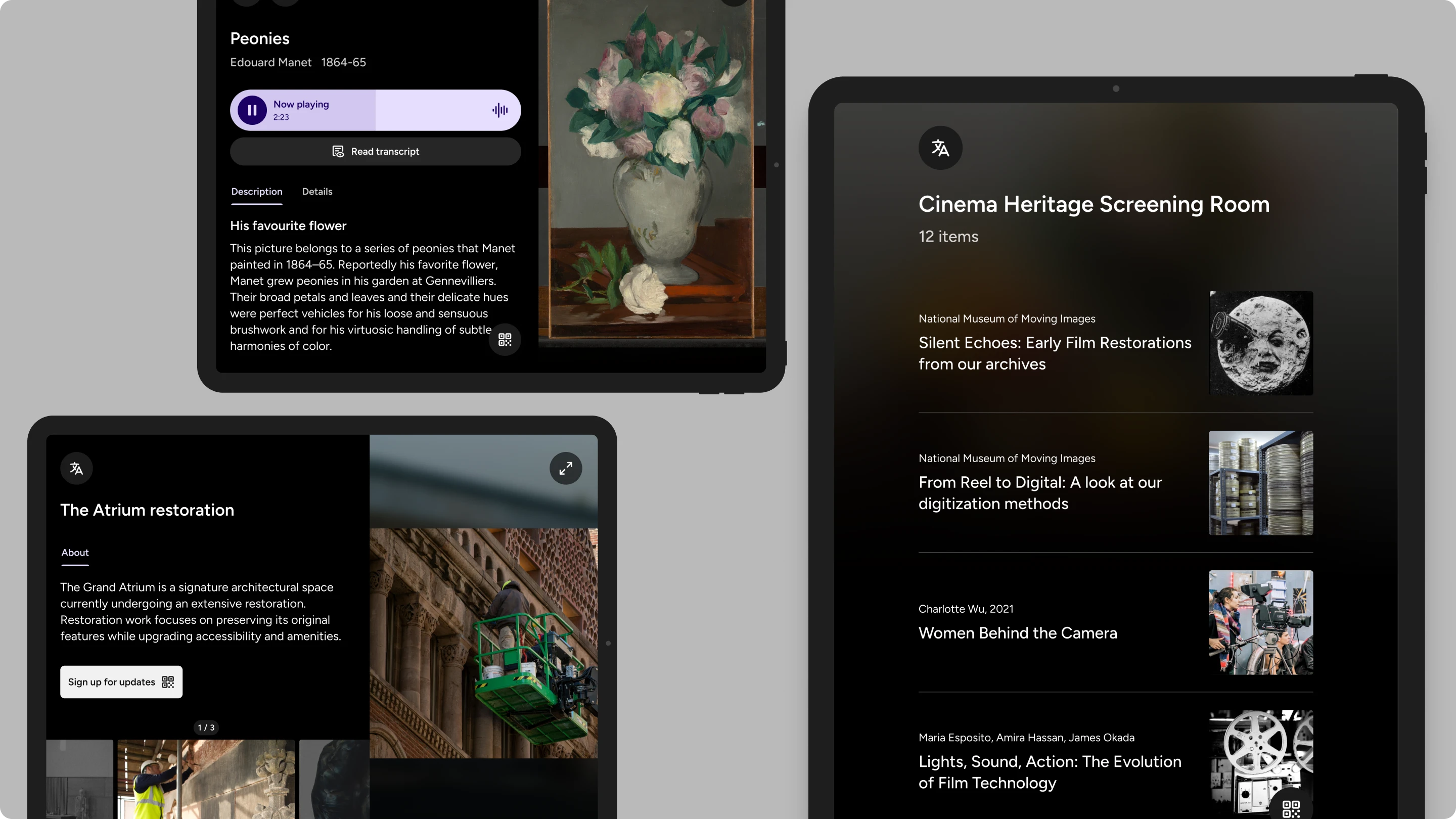
What is a Progressive Web App (PWA)?
Why PWAs are the future of frictionless digital experiences

In today’s world, the way we access information and experiences online is constantly evolving. For cultural institutions, universities, and event organisers, choosing the right digital platform is crucial for engaging audiences effectively.
While native apps have long been the go-to option, a powerful alternative is gaining significant traction: Progressive Web Apps (or PWAs).
What exactly is a Progressive Web App (PWA)?
At its core, a Progressive Web App is a website that behaves like a native mobile application. It is built using standard web technologies (such as HTML, CSS, and JavaScript) but delivers a user experience previously only associated with apps downloaded from an app store. Think of it as the best of both worlds: the accessibility of a website combined with the rich features and polished feel of a native app.
You don’t download a PWA from an app store. Instead, you access it through a web browser like any other website. Once loaded, however, a PWA can offer features such as offline functionality or the ability to be ‘installed’ to your device’s home screen, providing quick access without needing to go through an app store.
Why PWAs are a game-changer for digital engagement
At Pladia, we have strategically prioritised PWA technology as our primary delivery method for cultural venues, educational institutions, and events. This was not an experimental choice but a deliberate decision based on the distribution and reliability needs of these sectors.
Here’s why PWAs are such a game-changer:
Universal access without friction
Cultural venues, universities, and events serve diverse audiences, from international tourists who don’t want to download venue-specific apps to elderly visitors who may struggle with app store navigation. PWAs remove these barriers by providing immediate access through any modern browser without installation. It is about getting content to people, simply.
Instant updates for dynamic content
Exhibition information, event schedules, and campus details often change. PWAs enable real-time updates without requiring visitors to manually refresh or wait for app store approvals. This ensures your audience always sees the most current information.
Cross-platform reliability from a single codebase
Instead of maintaining separate native applications for iOS, Android, or proprietary media players, a PWA delivers consistent experiences across all devices while reducing development complexity and testing overhead.
Enhanced capabilities for institutional needs
For venues using in-house device fleets, we have developed hybrid solutions that combine PWA reliability with native device management. This approach provides the distribution simplicity of PWAs with the control large-scale deployments require. Our PWA-first strategy proves that web technology can deliver native-quality experiences while offering the flexibility and accessibility institutions need.
Pladia’s products: built on the PWA advantage
Our commitment to PWAs underpins Pladia’s entire product suite:
Empower
Our visitor-centred digital companion leverages the PWA framework to provide wayfinding, rich media, and accessibility features directly in the browser. Visitors can instantly engage with your space without downloads.

Event Sync
For festivals and live events, Event Sync delivers professional-grade, lip-sync audio through PWA technology. It supports unlimited concurrent users, even in challenging network environments, without requiring attendees to install an app.

Extend
Our digital display tools for Digital Labels, Interactive Kiosks, and Digital Signage are also powered by PWAs. Content created once in our Admin Console automatically flows to all visitor-facing displays, simplifying management and ensuring consistency.

PWA vs native apps: making the right choice
Choosing between a PWA and a native app involves weighing factors such as development cost, distribution, ongoing maintenance, and specific feature requirements. Native apps can offer deeper device integration and sometimes higher performance for complex applications. However, they bring significant overhead in development across multiple platforms, app store submissions, and version control.
For many organisations in the cultural, education, and events sectors, the PWA model offers the best balance. It delivers engaging, high-quality experiences with greater flexibility, lower friction for users, and easier maintenance for your team.
Looking ahead
Our decision to pursue a PWA-first strategy was not about chasing features for their own sake, but about ensuring dependability and accessibility. True stability comes not from perfect conditions but from designing for imperfect ones. By championing PWAs, Pladia is committed to delivering resilient software that performs under real-world conditions, enhancing access rather than creating barriers.